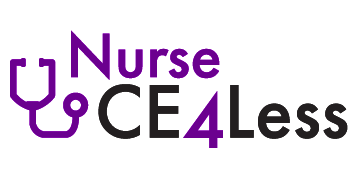Course Summary
As a result of advanced treatment options and increased access to quality health care, the number of people diagnosed with human immunodeficiency virus infection and acquired immunodeficiency syndrome has been decreasing in the United States. With proper diagnosis and treatment, people can live symptom-free for a significant length of time. Advances in testing and treatment options have improved the care and management of those individuals diagnosed with human immunodeficiency virus. Comprehensive prevention strategies and education for healthcare clinicians and patients important to help reduce the spread of the disease is discussed.
Course Format
Homestudy
Course Syllabus
- I. Introduction
- II. Overview of HIV Worldwide Disease Spread
- 1. Origin and History of HIV Infection
- 2. Epidemiology of HIV
- III. Types of HIV Infections
- IV. Acquired Immune Deficiency Syndrome
- V. Transmission of HIV
- 1. Direct Exposure to Infected Blood
- 2. Mother to Child Transmission
- 3. Vulnerable Populations
- 4. Co-Infection
- 5. Workplace Exposure
- VI. Prevention of HIV
- 1. Sexual Abstinence
- 2. Monogamy
- 3. Condom Use
- 4. Non-Penetrative Sexual Activity
- 5. Injection Drug Use
- 6. Mother to Child
- 7. Blood Transfusions/Products and Organ/Tissue Donation
- 8. Healthcare Workers
- 9. Post-Exposure Precautions
- 10. Vaccine
- 11. Diagnosis of HIV
- 12. Signs and Symptoms
- 13. Diagnostic Testing
- 14. HIV Testing
- 15. Rapid Screening
- 16. Home Testing
- 17. Reporting Test Result
- VII. Clinical Stages of HIV Infection
- VIII. Case Study: Female Diagnosed with AIDS
- IX. Summary
Author
Dana Bartlett, RN, BSN, MSN, MA, CSPI
Dana Bartlett is a professional nurse and author. His clinical experience includes 16 years of ICU and ER experience and over 27 years as a poison control center information specialist. Dana has published numerous CE and journal articles, written NCLEX material, textbook chapters, and more than 100 online CE articles, and done editing and reviewing for publishers such as Elsevier, Lippincott, and Thieme. He has written widely on the subject of toxicology and was a contributing editor, toxicology section, for Critical Care Nurse journal. He is currently employed at the Connecticut Poison Control Center. He lives in Wappingers Falls, NY.


